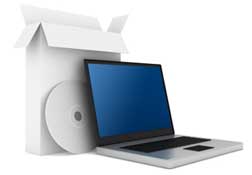
Project tracking within your accounting software program is a great way to understand the cost of a project. It is fairly easy to set up and manage. Once set up, you track projects by attributing income and expenses to projects each time you enter them. Project tracking is not to be confused with ‘job costing’, which is a more complex function that includes the tracking of a job’s progress, timing, and other information; whereas project tracking deals mainly with the income and expense for a project. Here are the basics of project tracking, so you can decide if it’s the right thing for you to do for your business.
Setting up projects
If your accounting software includes the ability to track projects, you should be able to go into your setup options to create a new project and give it a name and/or an abbreviation. Make sure the name is easily recognizable, so it’s easy to identify during data entry. Keep in mind that you may actually have more than one project within a bigger project, so the name you give each project should reflect that. Otherwise, finding the right project can be confusing during data entry.
Assigning a project during transaction entry
Typically, once this is set up, a field within the transaction entry screen(s) will show you the projects you have available to choose from. Be sure to choose the correct project for that income or expense. If you forget to choose a project to associate with that transaction, most systems will let you edit the invoice afterward.
Getting reports by project
Most accounting systems will allow you to filter a variety of reports by project. Whether you are looking for a sales report, financial or general ledger report, use a filter within your report generation tool to include only the information that relates to your project. By filtering the reports this way, you won’t need to sort through loads of other information to get the information you are looking for.
When you are finished tracking a project and have all the information you need, many systems will allow you to mark that project inactive, keeping your list of projects to choose from accurate and easy to work with.
Once you set up and use project tracking, you might just be surprised how easy it is to keep track of even the smallest of projects. Keep in mind, that many systems also allow you to assign projects to your labor costs for a more accurate picture of complete project costs. Check your system today and give project tracking a try!

Sometimes we do something the same way for so long, that we don’t realize there is a much more efficient way to accomplish it. Even when we know there is something better, it’s hard to make the switch. Change can be hard. But if there is clearly a faster and more efficient way of getting your payroll done, you could save yourself wasted time and agony. Here are some of the top time wasters when it comes to payroll processing.
Double entry
If your employees are filling out a time sheet, and then you are taking that data and entering it by hand into a payroll software, you are double entering data. This not only wastes time, but leaves an additional margin for error. You can streamline that process by implementing an electronic time clock, where you pull in the hours electronically into your payroll system. Yes, there is an added expense for the time clock, but you will quickly recoup that expense with the time saved! You will wonder how you went so long without it.
Tracking employee leave time on a spreadsheet
A surprising number of people could use their payroll software to track employee leave time, but instead use a spreadsheet and manage the process manually. Maybe the thinking is that their leave calculations are too complex for software to compute or that the setup will take too long. Either way, it’s worth your time checking into whether your payroll software can handle your employee leave calculations. A good payroll system will be able to handle a variety of calculation methods and make the job of calculating leave a whole lot easier for you, and also maintain accuracy.
Troubleshooting problems on your own.
Yep, we are a payroll software company. So you might be thinking this is a plug for us, but it’s not. Far too many people think they can personally handle questions, problems and issues they are having with their payroll, when a payroll support team could easily help them resolve questions and issues much faster. So, no matter whose payroll software or service you are using, opt in for a support plan. Calling for help and getting your issue resolved right away will bring peace of mind, and may also stop the issue from snowballing and becoming worse!
Once you stop the payroll time wasters, payroll processing will go much more smoothly, and you can expect accuracy to be improved as well.
Learn why voiding checks is important within your accounting software, and also the general process for voiding checks.
A check should be voided if you still have the check in hand, and the check amount is incorrect, it was issued to the wrong vendor or bank, or the invoice should not have been paid. Once a check has been voided, a record of that transaction remains in the system. If you have already sent out the check, you should only void the check if they never received it, and you need to send a new one.
The void check function is used to cancel an existing payment transaction. If the check had been used to pay an invoice, then voiding that check will also reverse the payment for that invoice, returning it to an unpaid status. Once the open invoice has been restored, it will again display on the open invoices and vendor aging reports. If the original check was entered without applying it to open invoices, then the void process will also void the expense portion of the check.
If a check number had not previously been recorded, due to the check being destroyed before ever entering the system, you will have a gap in sequence numbers. If your business likes to account for all check numbers, it is good practice to record and void that check in your accounting software. That way you will not question the missing check number later on, as it will be accounted for within the system.
 We recently conducted a survey to learn more about what business people experience when switching from one accounting software program to another. Of the respondents who had made the decision to switch software, 66% of them said they did so because they needed more advanced features. At Red Wing Software, we do find many customers need more robust features that can handle their accounting in a way that helps their business run more smoothly. Here are some of the most common features companies begin to need as they grow.
We recently conducted a survey to learn more about what business people experience when switching from one accounting software program to another. Of the respondents who had made the decision to switch software, 66% of them said they did so because they needed more advanced features. At Red Wing Software, we do find many customers need more robust features that can handle their accounting in a way that helps their business run more smoothly. Here are some of the most common features companies begin to need as they grow.
Manage multiple companies
Many of the basic accounting software programs put a limit in the number of companies/entities you can have and manage in your accounting software. This is fine at first, but as you grow, you may add companies and may want to manage and track their financial information separately. Many of these customers turn to Red Wing Software since our products offer the ability to set up and manage unlimited companies/entities. The ability to do reporting for one, all, or a combination of your companies which is often not found in more basic products , is another feature offered by Red Wing Software products.
Increased data capacity
If your system is getting bogged down, running slowly, crashing often, or simply performing poorly, you may be reaching that system’s data capacity. This is typical of basic systems after you have used them for some time. Many things can contribute to filling up a system’s data capacity: the number of transactions, inventory items, or even the amount of history stored in the system. Most basic systems place a finite limit on capacity of those items, cutting you off abruptly once that limit is reached. (For instance, you can only enter 20,000 inventory items or two years of history, etc.) Red Wing Software offers products that have unlimited storage capacity, where a finite number is not placed as a limit on any of those items. (Note: Please keep in mind that, although no finite limit is placed, hardware capacity may be reached someday, if used for long enough.)
Better/custom reporting
What good is an accounting software system if you cannot pull out the information you want and need? The profitability of your business depends on it. Whatever information you were able to pull out at the start may not be enough for you, the management team, or third parties, such as banks, who are requesting information from you. The inability to get information the way you want or need it is a good sign you need a better accounting software program. Red Wing Software products do offer a wide range of standard reports, and also the ability to add, remove, and move around fields of information on reports. You can also name and save your reports in a list of favorites so they are easily accessible when you need them!
These are some of the most popular reasons we find companies turning to Red Wing Software products as they outgrow their older, more basic accounting software. There is a long list of reasons businesses outgrow their accounting software, and surely your reasons are unique. If you have outgrown your software and need something new, give us a call at 800-732-9464 or e-mail info@redwingsoftware.com.